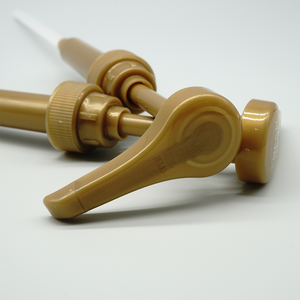
All categories
Featured selections
Trade Assurance
Buyer Central
Help Center
Get the app
Become a supplier

(56 products available)



























An elevator chime bell is a signaling device that produces distinct sounds to indicate the elevator's arrival or its movement between floors. These sounds help notify passengers of the elevator's presence and are often used in buildings to enhance the auditory experience and assist in indicating the elevator's arrival. There are different types of elevator chime bells based on sounds produced and mechanisms used.
Mechanical chime bells
These are the traditional elevator chime bells that use mechanics to produce sounds. They consist of hammers striking metal bars or tubes to create musical tones or simple bells that emit a ringing sound. The hammers are controlled by an electromagnet mechanism, which strikes the hammers against the tuned metal bars or bells. The mechanical chime bells are reliable and have a long life. They provide clear and distinct sounds that can be easily recognized. They require little maintenance once installed.
Electronic chime bells
Electronic elevator chime bells use digital sound modules to produce melodies and signals. They are designed to play pre-recorded sounds and music. They are compact and versatile devices. They can play various sounds, including melodies, alerts, and custom signals. They are easy to install and operate. They require little maintenance and can be powered by batteries or connected to an electrical source. They allow for creative sound design. They are suitable for various applications, including elevators, doors, and alarms.
Pneumatic chime bells
Pneumatic chime bells use compressed air to produce sounds. The compressed air is released through a valve system, creating a musical tone or ringing sound. They are often used in large buildings, clocks, or public announcement systems. They are powerful and can produce loud sounds. They are reliable and operate well in various environmental conditions. The sounds produced are clear and distinct. They have low power requirements and can be used in energy-saving applications.
Electrical chime bells
Electrical chime bells are used in various applications, including elevators, doorbells, and alarms. They are compact and versatile devices. They can produce melodies, alerts, and custom sounds. They are easy to install and operate. They require little maintenance and can operate on batteries or electrical power. They are widely used due to their simplicity and adaptability.
Various sounds and melodies are available for the elevator chime bell system. These are designed to meet the needs of different buildings and their users. Some common designs include:
Simple tone
In some buildings, only a few basic tones are required. One tone or a combination of two simple tones is used as an elevator chime bell signal. This is often seen in places where it is very important to keep things simple but still alert people when the elevator arrives.
Melodic chimes
For a more welcoming atmosphere, melodic chimes can be used. These chimes play short tunes or melodies, like a four-note sequence, when the elevator doors open or close. This makes using the elevator a nicer experience, especially in hotels, malls, and offices where people want to feel good.
Custom sounds
Some buildings allow for custom elevator chime bell sounds. Users can select from various audio options, including natural sounds, musical phrases, or even custom-composed chimes. This design choice lets the elevator sound blend in with the building's theme or the user's preference.
Speech announcements
Elevators in public places or buildings with many people may need chime bells that talk. These chime bells say the elevator's floor number clearly when the doors open. It helps people know what floor they are on. This is especially important for elevators used by many different kinds of people who might not know where they are going, like in airports or hospitals.
Multilingual announcements
In very international places, it may be good to have announcements in more than one language. The elevator can announce the floor in different languages if needed. This helps people who speak different languages to understand which floor they are going to. It is useful in hotels, business centers, and other places where travelers from other countries might visit.
Elevator chime bells are used in various settings to improve communication, accessibility, and user experience. Their sounds and signals serve specific purposes in different environments. Understanding these scenarios helps appreciate the role of chime bells in enhancing communication and user experience in various settings.
Purpose and application:
When selecting an elevator chime bell, it is important to consider the purpose and application of the sound. One should ask themselves questions such as: What type of environment will the elevator chime bell be used in? Will it be for a commercial building, residential complex, or an industrial facility? What is the purpose of the sound – is it to signal the arrival of the elevator, indicate the passing of floors, or to provide a welcoming tone upon entry? Considering these factors will help determine what kind of sound is appropriate for the specific setting.
Sound design and acoustics:
When choosing an elevator chime bell, it is important to consider the sound design and acoustics of its environment. One should analyze the ambient noise levels in the area where the bell will be used. Is it a quiet environment or a loud one? This will affect how well the chime can be heard. It is also important to consider the acoustics of the space. Is it an echoey space or a compact one? The sound propagation will influence how the chime is perceived. One should design a chime that is audible but not intrusive, harmonizing with the surroundings. It should have a pleasant tone that signals the elevator's arrival in a welcoming manner.
Regulations and standards:
When choosing an elevator chime bell, it is important to consider regulations and standards to ensure safety and compatibility. One should research the local codes governing elevator signaling devices. These codes may specify requirements such as sound levels, frequency ranges, or emergency signaling. One should also look into industry standards for chime bells. Organizations like the American National Standards Institute (ANSI) or the International Organization for Standardization (ISO) may have guidelines that should be followed. Ensuring that the chosen chime bell complies with these regulations and standards will help ensure its acceptance and proper functioning.
Technical considerations:
When choosing an elevator chime bell, it is important to consider the technical aspects of the device. One should determine what power supply the chime bell will use. Is it battery-operated or wired? The power supply will affect the installation and maintenance of the device. One should also consider the connectivity options available for the chime bell. Will it be compatible with the elevator control system? Ensuring proper connectivity will enable seamless integration of the sound signaling device. Additionally, one should look into the durability and reliability of the chime bell. It should be able to withstand frequent use and last long in demanding conditions.
Q1: What are the elevator chime bells made of, and how are they produced?
A1: Elevator chime bells are usually made from metals like brass, which are recognized for their durability and their ability to produce clear, ringing sounds. The manufacturing process involves shaping the metal through striking or spinning and then tuning the resulting bells to ensure they produce the desired notes.
Q2: How can one differentiate between various elevator chime bells?
A2: Different elevator chime bells can be distinguished by their sound, size, and appearance. Each bell produces a unique tone or tune, which can be a simple ring, a ding-dong, or a melody. They also vary in size, from small bells to larger, more decorative versions. Visually, bells can differ in shape, having flat or rounded tops, and in their finish, which may be polished brass, matte metal, or other textures.
Q3: What is the purpose of the various sounds made by the elevator chime bells?
A3: The sounds produced by elevator chime bells serve several important purposes. They announce the arrival of the elevator at a particular floor, signaling to passengers that the lift has arrived. The different tones or chimes also indicate the elevator's movement, helping passengers know what it is doing. Moreover, these sounds add a layer of auditory information that can enhance the experience and improve the communication of the elevator system.
Q4: Where are elevator chime bells commonly used?
A4: Elevator chime bells are primarily used in elevator systems within buildings. These bells are common in various environments, including residential apartments, commercial office buildings, shopping malls, hotels, and public facilities. They are designed to serve the practical purpose of signaling the elevator's arrival while contributing to the aesthetic and auditory ambiance of the space.
Q5: Can the musical tunes from the elevator chime bells impact people's emotions or behavior?
A5: Yes, the musical tunes from elevator chime bells can impact people's emotions and behavior. Pleasant and welcoming tunes can create a positive atmosphere, making people feel comfortable and happy. On the other hand, harsh or jarring sounds might make people feel uneasy. The choice of chime can affect the mood of the elevator environment, influencing how passengers perceive their experience.